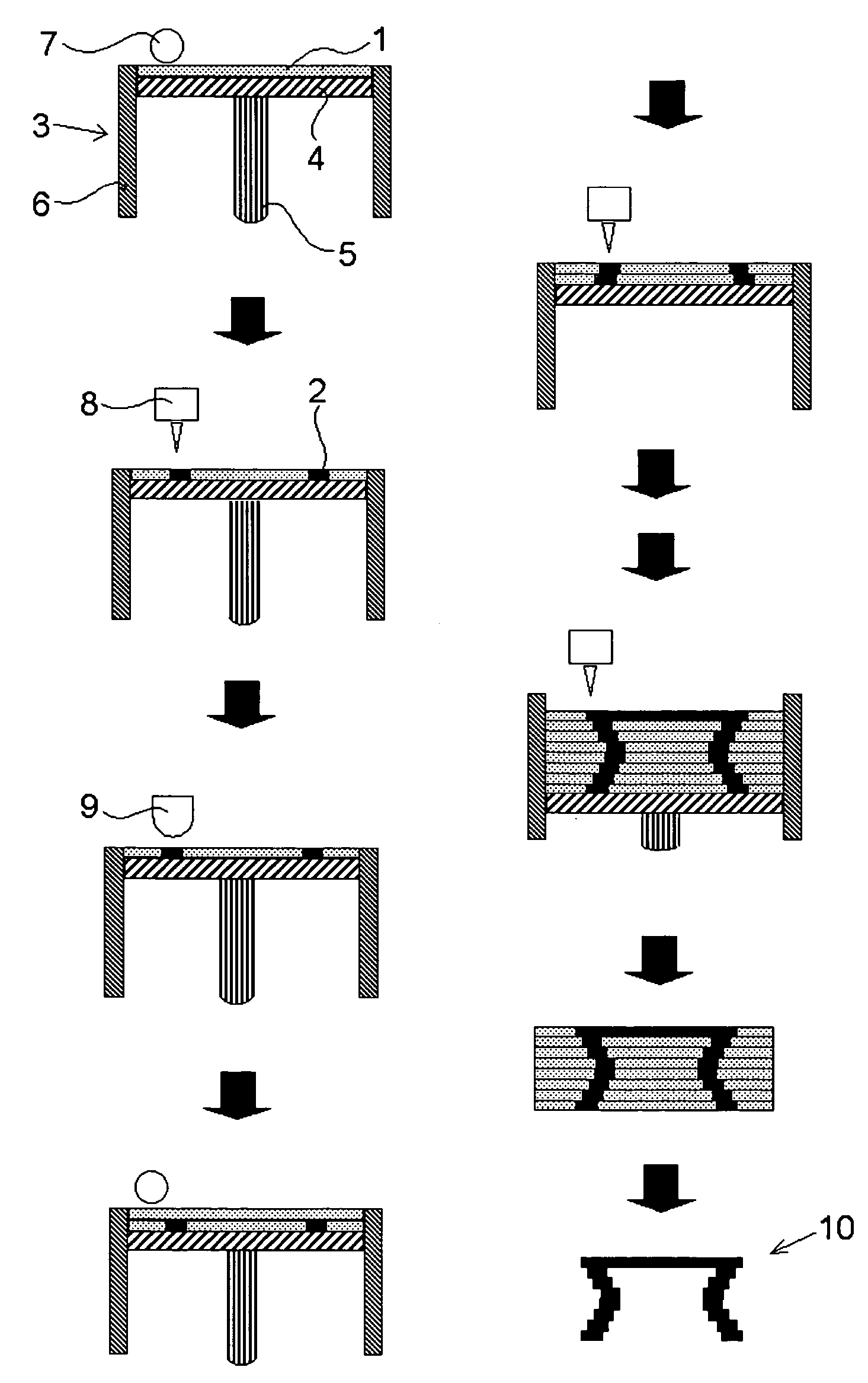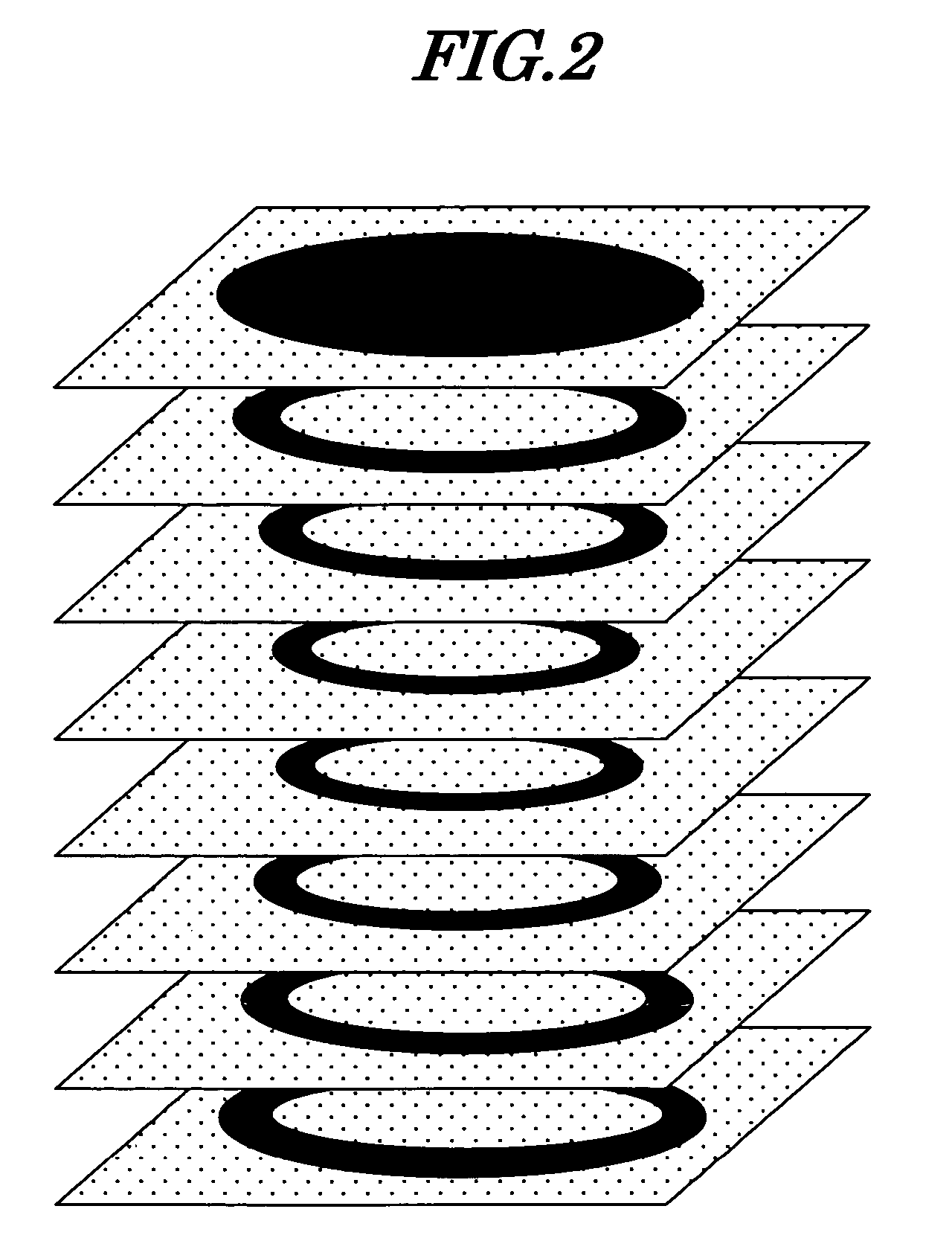Process for producing three-dimensional model, and three-dimensional model
a three-dimensional model and model technology, applied in the direction of additive manufacturing processes, manufacturing tools, instruments, etc., can solve the problems of time and expense, the method cannot achieve a satisfactory level of properties (texture, color) for a model, and the three-dimensional model for which transparency is required cannot be obtained by the conventional method, etc., to achieve excellent coloration and strength, short time period, and low cost
- Summary
- Abstract
- Description
- Claims
- Application Information
AI Technical Summary
Benefits of technology
Problems solved by technology
Method used
Image
Examples
example 1
Preparation of UV-curing Binder ‘Colorless Binder’
[0187]
Polymerizable compound: 1,3-butanediol dimethacrylate 10 gPhotopolymerization initiator: 2-hydroxy-2-methylpropiophenone0.6 g
[0188]The above components were stirred and mixed to give a colorless binder having a viscosity of about 2 mpa·s.
Preparation of UV-curing Binder ‘White Binder’
[0189]
Polymerizable compound: DPHA 10 gPhotopolymerization initiator: 2-hydroxy-2-methylpropiophenone0.6 gPolymerizable viscosity-adjusting compound: tolyloxyethyl 10 gacrylateWhite pigment: titanium oxide 3 g
[0190]The above components were kneaded using a three roll mill to give a white binder having a viscosity of about 20 mPa·s.
Preparation of UV-curing Binder ‘Yellow Binder’
[0191]
Polymerizable compound: DPHA 10 gPhotopolymerization initiator: 1-hydroxycyclohexyl phenyl ketone0.5 gPolymerizable viscosity-adjusting compound: tolyloxyethyl 10 gacrylateColorant: Y-10.6 g
[0192]The above Y-1, the M-1 below, and the C-101 below are as described in the ...
example 2
[0202]Amorphous silica (SEAHOSTAR KE-P50; average particle size 0.5 μm) was used as the powder material, and evaluation was carried out in the same manner as in Example 1.
example 3
[0203]Polystyrene(CHEMISNOW SX-130H; average particle size 1.3 μm) was used as the powder material, and evaluation was carried out in the same manner as in Example 1.
PUM
| Property | Measurement | Unit |
|---|---|---|
| particle size | aaaaa | aaaaa |
| particle size | aaaaa | aaaaa |
| refractive index n1 | aaaaa | aaaaa |
Abstract
Description
Claims
Application Information
 Login to View More
Login to View More - R&D
- Intellectual Property
- Life Sciences
- Materials
- Tech Scout
- Unparalleled Data Quality
- Higher Quality Content
- 60% Fewer Hallucinations
Browse by: Latest US Patents, China's latest patents, Technical Efficacy Thesaurus, Application Domain, Technology Topic, Popular Technical Reports.
© 2025 PatSnap. All rights reserved.Legal|Privacy policy|Modern Slavery Act Transparency Statement|Sitemap|About US| Contact US: help@patsnap.com



